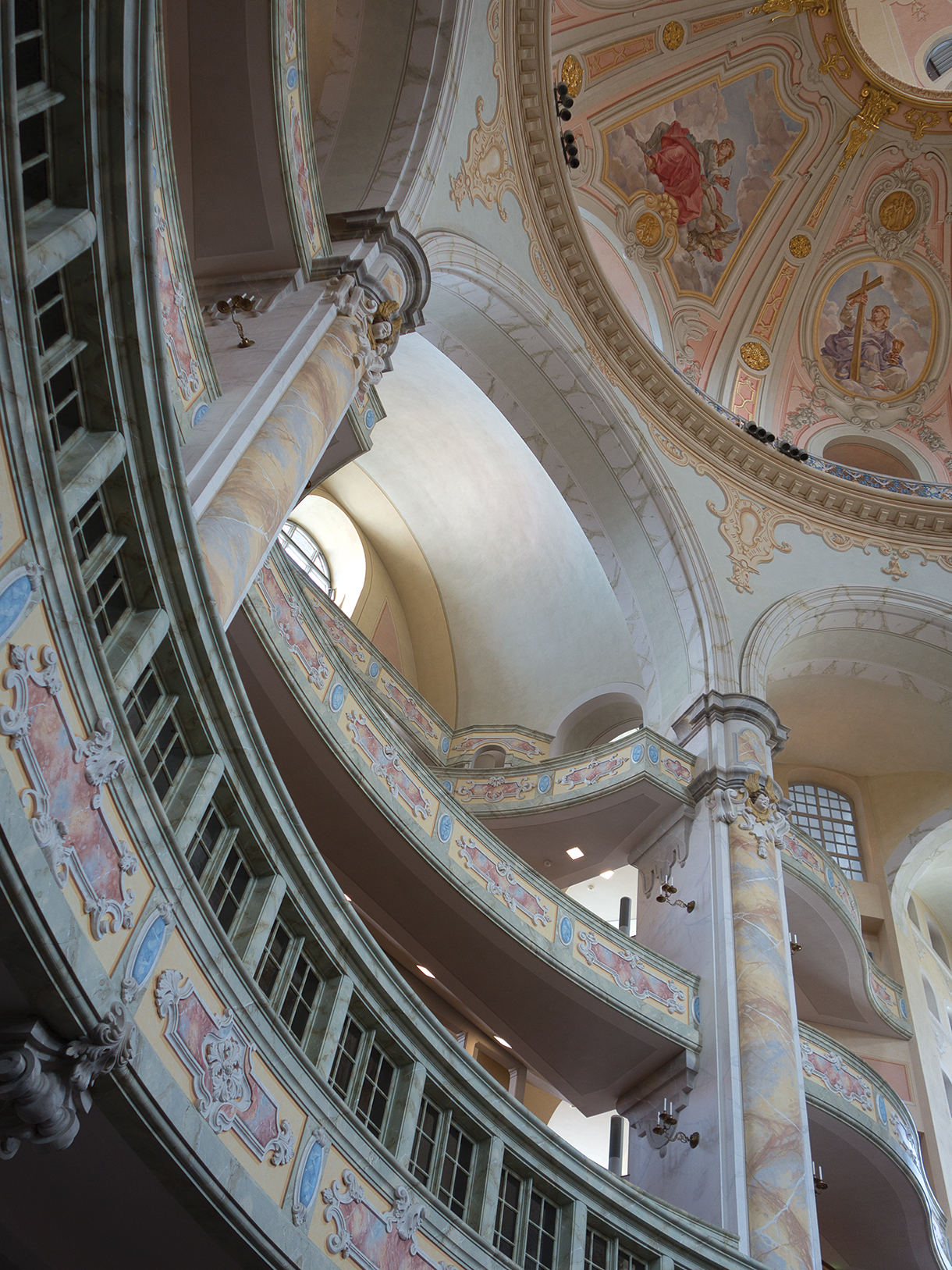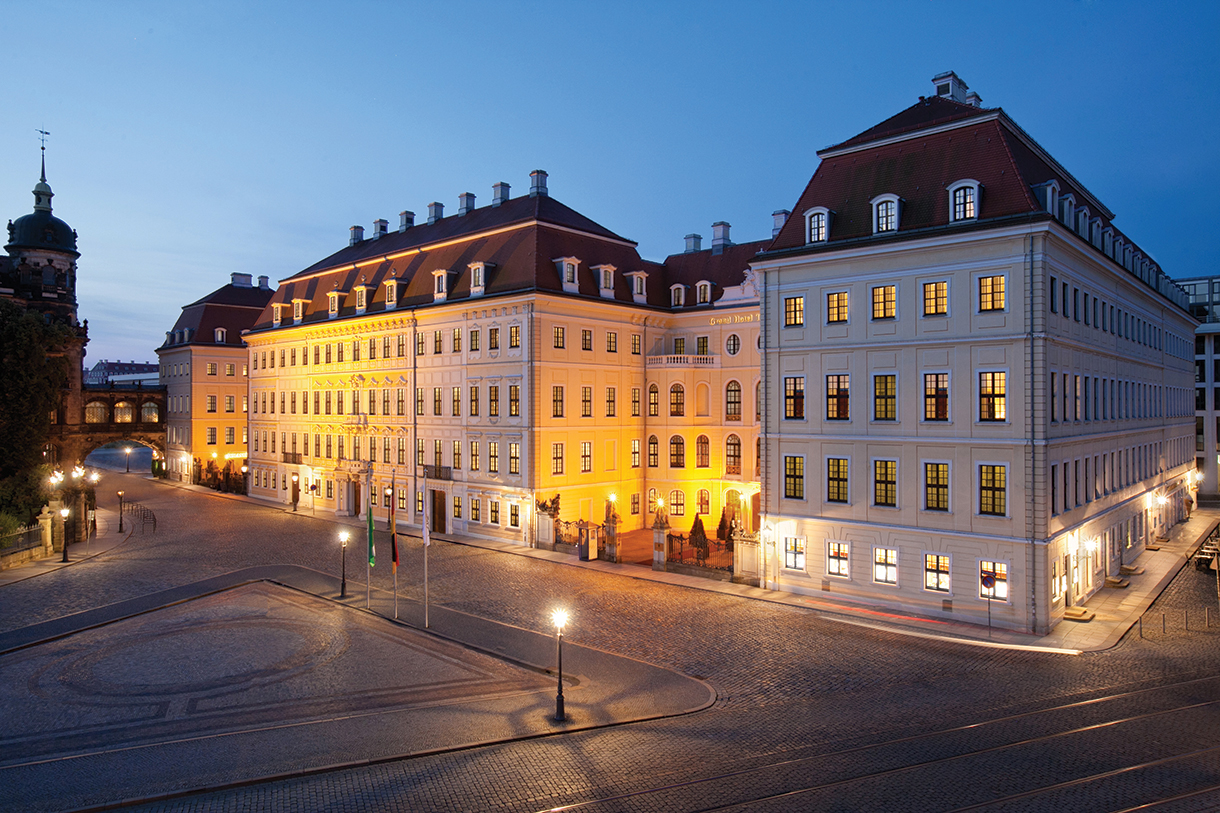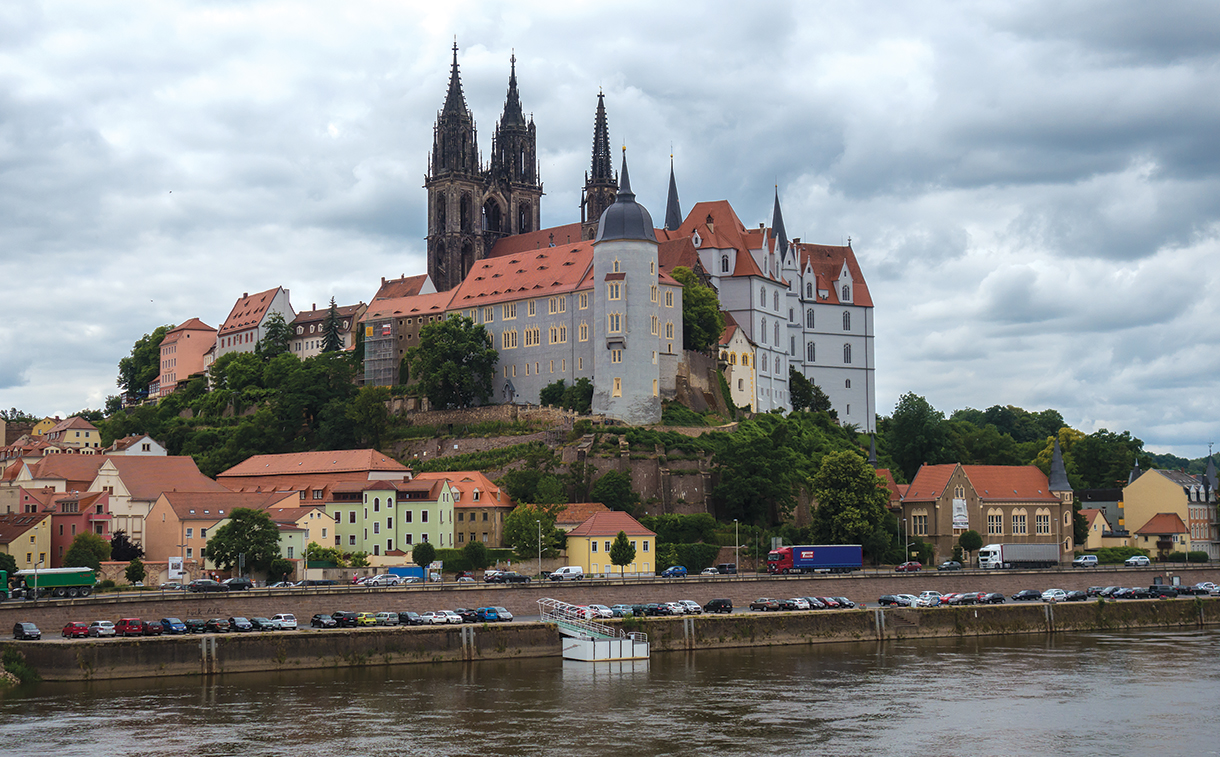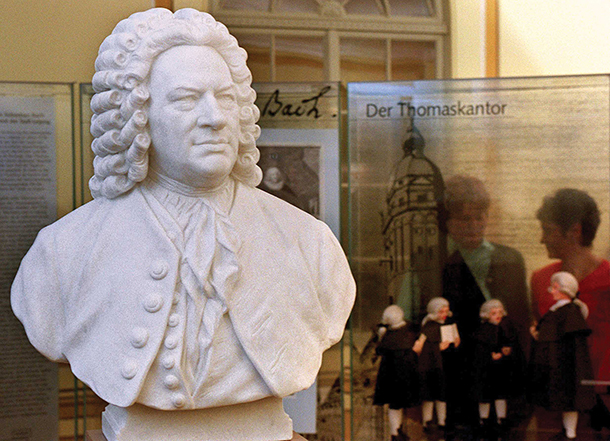
Beyond the Museums
Art walks through old Dresden and day trips to nearby Meissen and Leipzig.
Around Dresden
The elevated, tree-lined walkway Brühl’s Terrace overlooks the Elbe between the Royal Palace and the Albertinum. Named for August III’s prime minister, who built a mansion on the embankment, the site affords panoramic views of the city. A cherished landmark is the 300-foot domed steeple of the Lutheran Church of Our Lady (Frauenkirche), which served the predominantly Protestant population. The 1743 building collapsed after the bombing and was left in ruins by the Communists as an anti-war memorial. The reconstruction, completed in 2005, incorporates charred stones from the original that dot the façade. The Catholic Hofkirche, connected to the palace, was built by Augustus the Strong, who converted to Catholicism to assume the Polish crown. Destroyed in the war, it was rebuilt by the DDR in the 1960s. Painted in the 1870s to mark the 800th anniversary of the Wettin dynasty, the Procession of Princes quickly faded and was replaced by a replica on 23,000 Meissen porcelain tiles. Across the river, beyond the arched sandstone Augustus Bridge, is the Neustadt district, most of whose 18th-century buildings were unscathed in the war, including the Japan Palace where Augustus the Strong planned to install his porcelain collection, which houses the SKD’s Museum of Ethnography. Fronting Theaterplats is Gottfried Semper’s 1878 neoclassical Opera House (Semperoper). Its curving façade, based on the Colosseum, is surmounted by statues of Dionysus and Ariadne in a chariot drawn by four panthers, and the marble is interior. Home to the renowned Staatskapelle orchestra and Semperoper Ballet, the facility hosted premieres of works by Richard Strauss, Richard Wagner, and Carl Maria von Weber. Flanking the entrance are portrait busts of Goethe and the poet Friedrich Schiller, who wrote his Ode to Joy for a Masonic lodge in Dresden in 1785. (Beethoven adapted it for the chorus of his Ninth Symphony.)

STAY: Situated near the Royal Palace and the Zwinger, the 1705 Hotel Taschenbergpalais Kempinski was constructed for Anna Constantia von Brockdorff, a mistress of Augustus the Strong, and later occupied by the crown prince’s family. Restored in the 1990s, with a modern interior, the five-star property has welcomed Barack Obama, Vladimir Putin, Jacques Chirac, European royals, and German leaders. Retreat to the Karl May Bar, a paneled retreat inspired by New York’s Oak Room, filled with American Western motifs in homage to Dresden’s renowned author of cowboy and Indian adventure stories. From $115; kempinski.com
DINE: Set within the arcaded stone walls of the Zwinger, Alte Meister Café & Restaurant is ideal for lunch, a pre-theater meal, or a glass of wine on the terrace beside a bronze statue of Carl Maria von Weber. altemeister.net

Meissen
A half hour northwest of Dresden, accessible by car, train, or river cruise, the town rises from the Elbe to a cathedral (the spires were added in the early 20th century) and the 15th-century Albrechtsburg castle, where Augustus the Strong established Europe’s first porcelain factory. The narrow streets are marked by a remarkable number of “stumbling blocks” (Stolpersteine) embedded in the pavement with inscribed brass plaques that mark the homes of victims of the Holocaust. The city’s main attraction is the modern factory a half-hour walk from the center, where the House of Meissen Museum showcases a comprehensive collection of antique and contemporary porcelain, artisans demonstrate how it is made and painted, and a café serves afternoon tea on porcelain china, much of which is available for purchase. meissen.com
STAY: Dorint Parkhotel, a boutique hotel in an expanded Art Nouveau villa on the banks of the Elbe, has views of the hilltop castle and cathedral. The picturesque scene can be enjoyed from guest rooms, the spa, or the indoor/outdoor garden café and Restaurant Ohms. From $75; hotel-meissen.dorint.com
DINE: Ratskeller Meissen is a cozy tavern on Marktplatz, the city’s central square, for local fare such as pork schnitzel, and a variety of Saxon beers and local wines. ratskeller-meissen.de


Leipzig
Visitors to Dresden would do well to include Leipzig in their itinerary. Johann Sebastian Bach led a boys’ choir in this handsome walkable Saxon town, and the churches where they performed, St. Thomas and St. Nicholas, host concerts during the annual Bach Festival (June 11–21, 2020). Head to the Bach Museum to learn about Bach’s career and his multi-generational family of musicians, and continue to the Grassi Museum, which brings together the Museum for Musical Instruments, the Leipzig Museum of Ethnography, and the Museum of Applied Arts, all operated by SKD. The Museum of Fine Arts houses one of Germany’s largest collections in a handsome new building, with important works by Dutch Old Masters, Lucas Cranach, Caspar David Friedrich, Max Klinger, Max Beckmann, and realist works from the DDR and the New Leipzig School, including Neo Rauch. leipzig.travel
STAY: The elegant Hotel Fürstenhof Leipzig occupies a converted mansion near the Old Town shopping district. Aesthetes will appreciate the artistically presented gourmet cuisine in Restaurant Villers. From $220; hotelfuerstenhof-leipzig.com
DINE: Grab a pre-theater meal at Restaurant Weinstock; seating is available in a vaulted dining room, the wine cellar, or while people-watching from the outdoor terrace on Marktplatz, the city’s central square. restaurant-weinstock-leipzig.de




